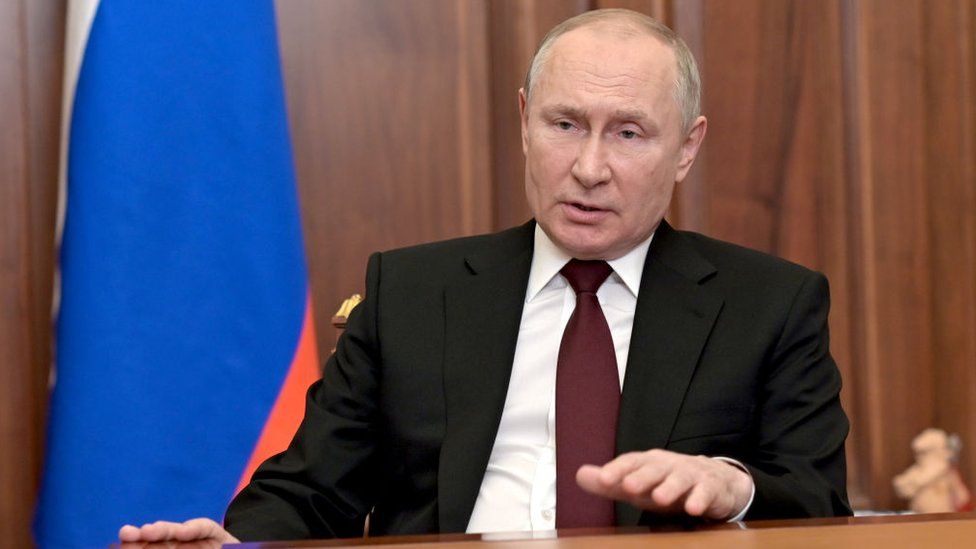Vladimir Vladimirovich Putin is a Russian politician and former intelligence officer who is the current president of Russia. Since 2012, he has been serving in the position.
He previously held the office from 1999 to 2008. He served as prime minister between 1999 and 2000, and again from 2008 to 2012.
After Alexander Lukashenko, Putin is Europe’s second-longest-serving president. Putin was born in Leningrad, now Saint Petersburg. He studied law at Leningrad State University and graduated in 1975.
Putin worked as a KGB foreign intelligence officer for 16 years and rose to the rank of lieutenant colonel. He then resigned in 1991 to pursue a political career at Saint Petersburg.

In 1996, he moved to Moscow to join President Boris Yeltsin’s administration. After serving briefly as the director of the Federal Security Service (FSB) and secretary of the Security Council, he was appointed as prime minister in August 1999.
Putin was elected acting president after Yeltsin’s resignation. He was then elected as president in 2004.
Putin was constitutionally restricted to two terms as president at the time. He was elected again as prime minister in 2008 under Dmitry Medvedev. In 2012, he returned to the presidency, in an election marred with fraud allegations and protests.
After a referendum in April 2021, he signed constitutional amendments into law, including one that would allow him to run again for reelection, potentially extending his presidency up to 2036.
Putin Height: How Tall Is Vladimir Putin?
Vladimir Putin stands tall at 5 feet 7 inches and weighs 71 kg.
In his first term as president in the first year of his presidency, the Russian economy expanded for eight consecutive years, which was measured as purchasing power rising by 72%.
Real incomes grew by a factor of 2.5 and real wages nearly tripled; poverty and unemployment were reduced to a half, and Russians were self-assessing their life satisfaction increased significantly.
The increase was the consequence of a five-fold rise in the cost of oil as well as gas that comprise the bulk of Russian exports.
It also reflects the recovery of the post-communist depression as well as financial crises, an increase in foreign investment, as well as prudent fiscal and economic policies. Putin also helped lead Russia into victory during the Second Chechen War.
In his role as the prime minister under Medvedev, he supervised massive military reforms and police reforms and also the victory of Russia in the Russo-Georgian War.
During his third term as President, declining oil prices in conjunction with international sanctions in place in the first quarter of 2014 following the military conflict in Ukraine and the annexation of Crimea caused the GDP to shrink by 3.7 percent in 2015.
Even though, the Russian economy recovered in 2016 with a 0.3 percent growth in GDP.
The other developments that have occurred under Putin include the building of pipelines, the restoration of satellite navigation systems GLONASS, and the creation of the infrastructure needed for major international sporting events such as the 2014 Winter Olympics in Sochi and the 2018 FIFA World Cup. Then, in February 2022, Putin called for a complete invasion of Ukraine.
Under Putin’s direction, Russia has shifted to an authoritarian regime. The majority of experts do not believe Russia is a democratic country due to the imprisonment and suppression of political opponents and the intimidation and suppression of the press, as well as the absence of free and fair elections.
Russia has not scored well according to Transparency Internation’s Corruption Perceptions Index, the Economist Intelligence Unit’s Democracy Index, and Freedom House’s Freedom in the World index.
Source: Kingaziz.com
